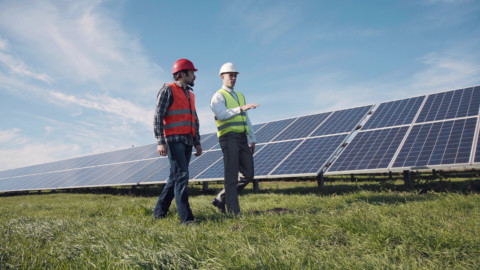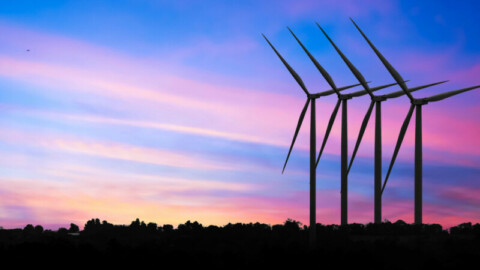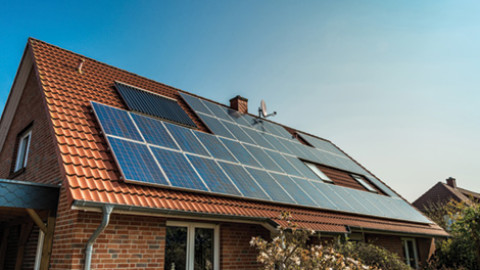The Australian Energy Market Operator (AEMO) has published its 2020 Integrated System Plan (ISP), highlighting the National Electricity Market (NEM) investments that will be crucial in securing grid stability.
The 2020 ISP identified the optimal development path for the NEM that will both maximise consumer benefits and deliver $11 billion in net market benefits to 2040.
Minister for Energy and Emissions Reduction, Angus Taylor, said the ISP provided a number of recommendations the Government is already working on to address system challenges currently facing the NEM.
“The Government has a clear priority to deliver reliable, secure and affordable power and is backing new generation, transmission and storage projects to ensure system strength now and into the future,” Mr Taylor said.
Mr Taylor said that while transmission is likely to be an important component of the future electricity system, any investment in the grid must make economic sense.
“Any transmission project that is developed must provide value to consumers,” Minister Taylor said.
AEMO’s Managing Director and CEO, Audrey Zibelman, said that the ISP undertakes a comprehensive review of the changes that are occurring in the electricity system and identifies the series of supply and network investments that can best meet consumer expectations of affordable and reliable electricity.
“The ISP analysis confirms that as our coal plants retire, the least-cost transition of the NEM will be to a highly diverse portfolio consisting of distributed energy resources (DER) and variable renewable energy (VRE), supported by multiple dispatchable resources,” Ms Zibelman said.
“To enable the expected rise in renewable energy, the ISP identifies strategic investments in transmission infrastructure and renewable energy zones (REZs), which when coupled with low-cost firming resources, will be the most cost-effective way to add generation capacity and balance variable resources across the NEM.
“In progressing these projects, it is critical that the cost of building transmission lines is tightly managed to ensure consumers derive these benefits.”
The work of producing the Final 2020 ISP has also highlighted essential market and regulatory reform needed to ensure consumers reap the benefit of the future power system.
“When implemented alongside market and regulatory reforms, the targeted transmission investments identified in the ISP will bring the right resources into the system in a timely fashion.
“This will create a modern, efficient and resilient energy system that delivers $11 billion in net market benefits weighted across the different ISP scenarios over the next two decades,” Ms Zibelman said.
“The work of the Energy Security Board and market bodies on essential reforms to attract investment and optimise markets for emerging energy resources remains critical to ensure the consumer benefits of the ISP are fully realised.”
Through extensive consultation, which included the publication and review of the Draft 2020 ISP in December 2019, AEMO considered many possible operating environments, transition scenarios and sensitivities to rigorously test and identify significant change in the investments needed for the NEM to 2040.
These are broadly classified as:
- DER: expected to double or triple, providing 13 to 22 per cent of total underlying annual energy consumption
- VRE: more than 26GW of new VRE is needed to replace coal-fired generation, with 63 per cent of coal-fired generation set to retire
- Dispatchable resources: 6-19GW of new dispatchable resources are needed to back up renewables, in the form of utility-scale pumped hydro, fast responding gas-fired generation, battery storage, demand response and aggregated DER participating as virtual power plants
- Power system services: the growing need to actively manage power system services (voltage control, system strength, frequency control, inertia, ramping and dispatchability
- The transmission grid: strategically placed interconnectors and REZs, coupled with firming resources, to add capacity and balance variable resources across the NEM
Over an 18-month period, AEMO consulted on and developed the ISP that includes the least-cost investments to optimise net market benefits and deliver low-cost, secure and reliable energy through a comprehensive range of plausible energy futures for the NEM.
“AEMO thanks the hundreds of stakeholders that have contributed to this ISP and looks forward to working hand-in-hand with consumers, governments and the industry in helping ensure our energy system is affordable, secure, reliable and sustainable,” Ms Zibelman said.
The 2020 ISP identified four categories of transmission projects ‒ committed, actionable, actionable (with decision rules) and future ISP projects ‒ permitted to be developed by the transmission network service provider through the Renewable Investment Test – Transmission (RIT-T) process.
Previously committed ISP projects include South Australian system strength remediation, the Western Victorian Transmission Network Project, and QNI Minor, which is the addition of 150 MW of capacity on the NSW-QLD interconnector.
2020 actionable ISP projects include:
- VNI Minor: a minor upgrade to the existing Victoria-NSW Interconnector (VNI), which is close to completing its regulatory approval process, with project completion expected in 2022-23
- Project EnergyConnect: a new 330kV double-circuit interconnector between South Australia and New South Wales, which is close to completing its regulatory approval process. The project completion is expected by 2024-25
- HumeLink: a 500kV transmission upgrade to reinforce the NSW southern shared network and increase transfer capacity between the Snowy Mountains hydroelectric scheme and the region’s demand centres. This project commenced its regulatory approval process earlier this year, with project completion due by 2025-26
- Central-West Orana REZ Transmission Link: network augmentations to support the development of the Central-West Orana REZ. The project completion is due in 2024-25.
- Two further projects are deemed actionable with additional decision rules
- VNI West: a new high voltage alternating current (HVAC) interconnector between Victoria and NSW
- Marinus Link: two new HVDC cables connecting Victoria and Tasmania, each with 750 MW of transfer capacity and associated alternating current transmission
Climate Council Senior Researcher, Tim Baxter, said the report proves that renewable energy is Australia’s best option for clean, cheap and reliable power.
“The market operator has made clear that the renewable energy industry, in the world’s sunniest and windiest inhabited continent, can power Australian homes, businesses and heavy industry,” Mr Baxter said.
“Wind and solar backed by storage are now the cheapest form of new generation in Australia, which means lower prices for everyone.”
Climate Council Chief Executive, Amanda McKenzie, argued that AEMO’s report shows that the current push for gas expansion from the National COVID-19 Coordination Commission is unnecessary and undesirable.
“We can transition to a renewable-powered energy grid without the need for any new gas. New gas is expensive, polluting and a poor public investment,” Ms McKenzie said.
“Our recently released Clean Jobs Plan shows we can create 15,000 jobs in renewable energy, while setting Australia up for the future and tackling climate change. Clean energy is a no brainer.
“The report also shows that despite gas industry claims, an ever-deeper penetration of renewable energy doesn’t rely on growth in gas.
“Those scenarios where wind and solar provide more of Australia’s energy needs see the lowest need for all fossil fuels, including gas.”
EY Energy Leader, Matt Rennie, said, “The Australian Energy Market Operator’s $25 billion Integrated System Plan to build up the power grid is a real milestone in energy policy and evidence AEMO is stepping up to the plate to be a real force in the design of the energy system through and post the transition.
Preparing for a de-carbonised generation mix and a greater role for decentralised power through solar and batteries was always going to require investment in new transmission lines and distribution Infrastructure to cope with these changes. We are entering a time of new beginnings in energy.
“The important thing now is to press on, send the right signals, and allow competition and markets to bring the costs down and drive our inefficiencies.
“This needs to be the beginning of new transparent communication between AEMO as the system designer, the AER as an efficiency czar and the AEMC to ensure that the design of the regulatory framework provides the best possible economic architecture for smart and new investment.”
Energy Networks Australia CEO, Andrew Dillon, welcomed the release of the document, saying the plan highlighted the critical role transmission would play.
“To handle the seismic shift expected in electricity generation by 2040, we will need targeted investment in key transmission connections,” Mr Dillon said.
“Around the world, we’re seeing countries embrace greater connectivity as part of managing the ever-increasing amounts of variable generation from renewables.
“The ISP shows that a more connected future makes sense for Australian energy customers too.
“The sheer scale of the energy transition in the NEM is outlined in the ISP with a predicted 200 per cent increase in household solar and batteries and a 63 per cent drop in coal generation by 2040.”
Mr Dillon said this jump in variable generation and closure of synchronous plants would need to be carefully managed to ensure a strong and reliable electricity system.
“The ISP charts a path to managing the development of a more interconnected grid,” Mr Dillon said.
“The priority for energy networks is ensuring these proposed developments are efficient and deliver customers a low-cost pathway to a more secure, affordable system.
“Networks will continue to deliver an efficient, reliable and affordable grid for customers.”
The Australian Energy Council’s (AEC) Chief Executive, Sarah McNamara, said, “The ISP is important in identifying strategic shifts in the energy market and ensures there is a national approach to system planning.
“We welcome AEMO’s decision to consider multiple scenarios and allow for staged implementation of two major projects during the 2020s, making use of the proposed ‘decision rules’ structure.
“This optionality will ensure flexibility and allow adjustment to be made based on market conditions. It helps the industry get ready in case they are ultimately needed but does not commit customer funds earlier than strictly necessary.
“Whilst AEMO has provided a broad, national plan, the task now shifts to planning these projects in detail and justifying their cost-benefits before the regulator. This is an equally critical part of the process.”
















